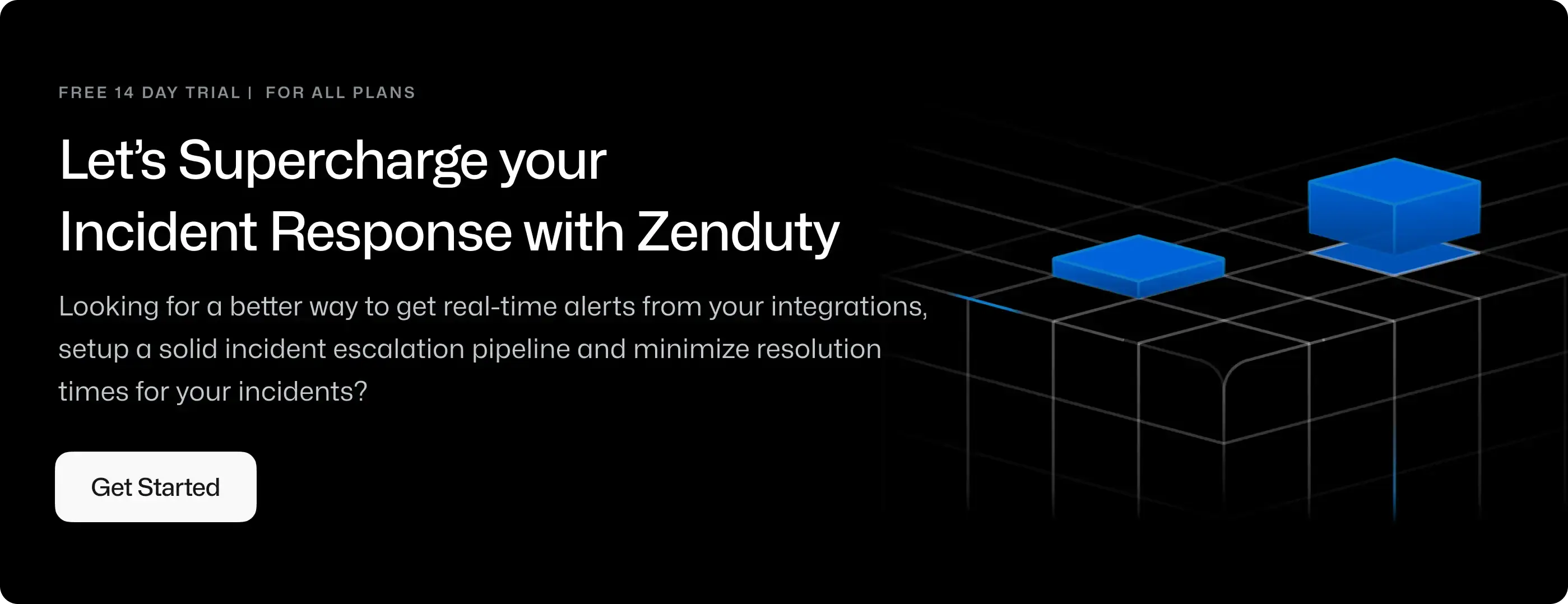ServiceNow Integration Guide
ServiceNow is a Platform-as-a-service provider, providing technical management support, such as IT service management, to the IT operations of large corporations, including providing help desk functionality.
What can Zenduty do for ServiceNow users?
With ServiceNow's Integration, Zenduty sends new ServiceNow Incident alerts to the right team and notifies them based on on-call schedules via email, text messages(SMS), phone calls(Voice), Slack, Microsoft Teams and iOS & Android push notifications, and escalates alerts until the alert is acknowledged or closed. Zenduty provides your NOC, SRE and application engineers with detailed context around the ServiceNow Incident alert along with playbooks and a complete incident command framework to triage, remediate and resolve incidents with speed.
When a ServiceNow Incident is created, Zenduty can be alerted, which inturn create a Incident In Zenduty. Any future alerts sent by the ServiceNow Incident can be handled by the predefined Incident mapped provided by the user on initial integration.
You can also use Alert Rules to custom route specific ServiceNow alerts to specific users, teams or escalation policies, write suppression rules, auto add notes, responders and incident tasks.
To integrate ServiceNow with Zenduty, complete the following steps:
Prerequisites:
-
A ServiceNow user that has ITIL role or permissions similar to ITIL role.
- To give that User a ITIL role follow this : ServiceNow Role Assignment
In Zenduty:
-
To add a new ServiceNow integration, go to Teams on Zenduty and click on the team you want to add the integration to.
-
Next, go to Services and click on the relevant Service.
-
Go to Integrations and then Add New Integration. Give it a name and select the application ServiceNow from the dropdown menu.
-
Go to Configure under your integrations.
-
There would be a URL generated for you here, Copy that URL into the code given below, or in the integration itself.
(function executeRule(current, previous /*null when async*/) { try { var r = new sn_ws.RESTMessageV2(); r.setEndpoint("<PASTE-WEBHOOK-URL-COPIED-FROM-ZENDUTY>"); body ='{' + '"state"' + ':' + '"'+current.state+'"' + ',' + '"sys_id"' + ':' + '"'+current.sys_id+'"' + ',' + '"number"' + ':' + '"'+current.number+'"' + ',' + '"title"' + ':' + '"'+current.short_description+'"' + ',' + '"description"' + ':' + '"'+current.description+'"' + ',' + '"assigned_to"' + ':' + '"'+current.assigned_to+'"' + '}'; r.setRequestBody(body); r.setHttpMethod("POST"); var response = r.execute(); var responseBody = response.getBody(); var httpStatus = response.getStatusCode(); } catch(ex) { var message = ex.getMessage(); } })(current, previous); -
Copy the generated Code to be added to ServiceNow Business Rules.
In ServiceNow:
-
Log in to your ServiceNow domain with your ServiceNow account.
Make sure you have permissions to create a Business rule. -
In your Instance, Open Business rules under System Definitions and click New

-
Enter an appropriate Name, Select the Incident Table and tick the Advanced Tickbox.
-
Under When to run tab, Choose after from the When dropdown.
-
Also tick the Insert and Update tickboxes.

-
Then, Under the Advanced tab, paste the code that was provided in Zenduty and Submit the Business rule.

-
Your ServiceNow 2-Way Integration is now complete.
